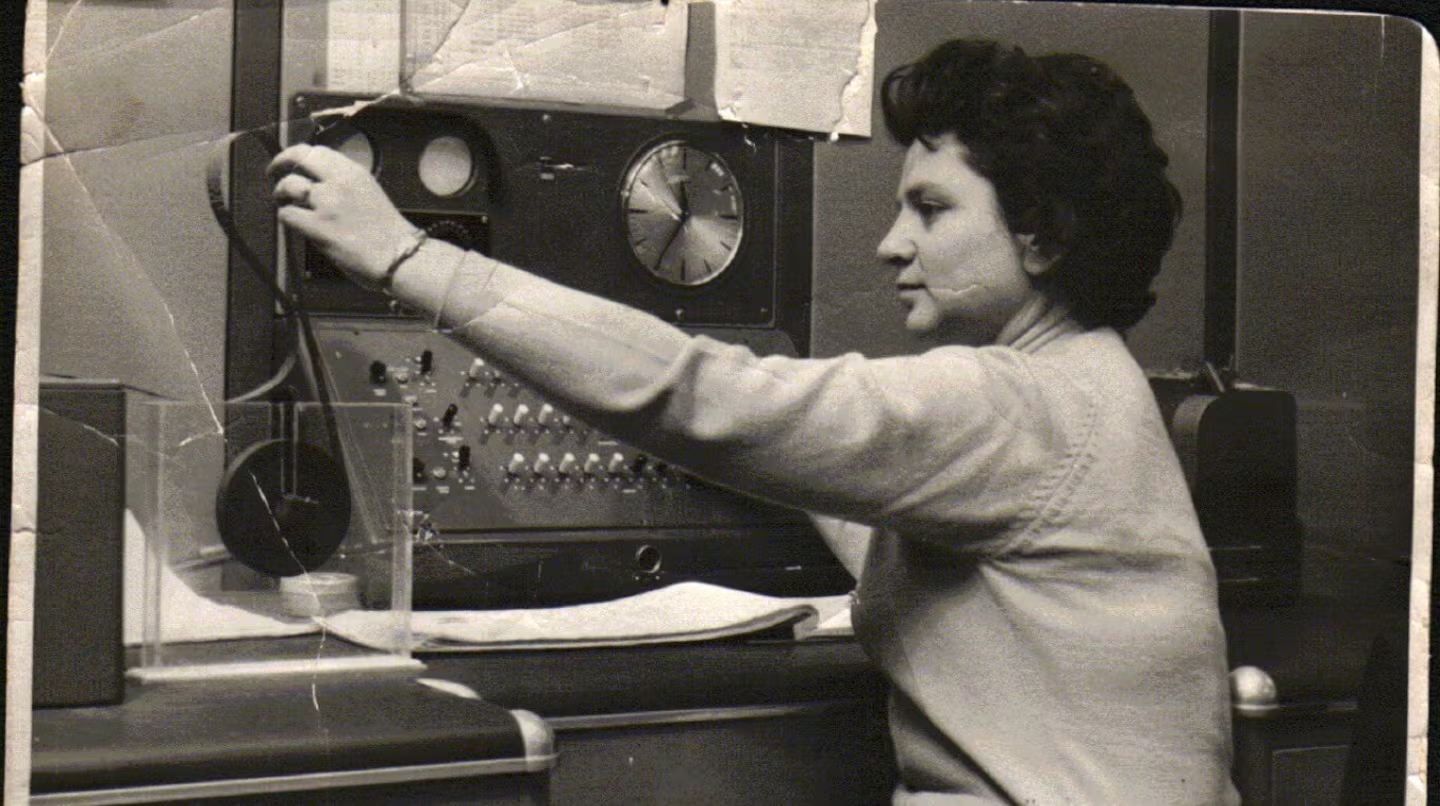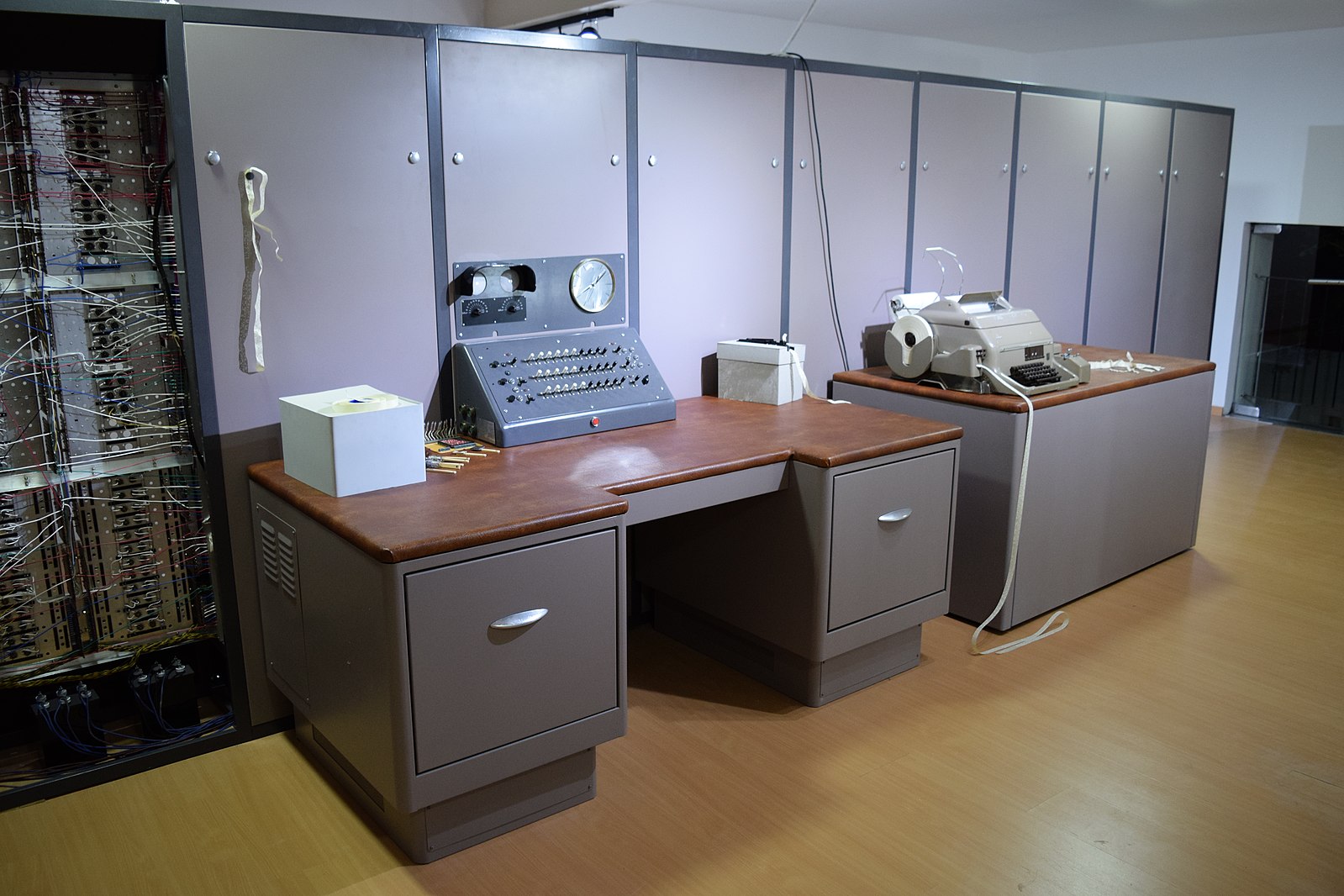
Figure 1: Cecilia Berdichevsky with the computer 'Clementina'.
Source: Zagalsky (2021)
Downloadable teaching resource
Overview
Cecilia Berdichevsky (born Mirjam Tuwjasz) is often recognised as the first programmer of Argentina, writing and running the first program for the University of Buenos Aires’ computer Clementina.
Background
Born in then-Poland (now Belarus) in 1925 amid growing hostility to Jews, Cecilia emigrated to Argentina with her mother in January 1930, at four years old. Cecilia first worked as a public accountant, but at 31 years old, after meeting her future mentor Manuel Sadosky, she decided to enrol in a Mathematics degree at the University of Buenos Aires. She graduated in 1960 and became a teacher, just in time to see the University of Buenos Aires became the host of a Ferranti Mercury computer nicknamed ‘Clementina’ in 1961 (IFIP, 2010; Zagalsky, 2021).
Contributions
After the arrival of Clementina, Cecilia was tutored by Cicely Popplewell, known for her collaboration with Alan Turing, and Cecilia became the first person to create and run a program on Clementina, spending less than 30 minutes to solve a calculation she couldn’t finish manually (Universidad de Buenos Aires, 2023). Following this Cecilia was the only person with the qualifications to be awarded a scholarship where she studied six months in each the University of London and the Center of Nuclear Studies of Saclay in France, becoming an expert on the Ferranti Mercury computer system (IFIP, 2010).
In 1966 Cecilia stopped working with Clementina - a military coup and aggressive invasion of the Institute of Calculus resulted in major upheaval, 90% of the staff at the institute resigned and left to work elsewhere, Cecilia’s mentor Manuel Sadosky was exiled, and Clementina began to be dismantled (Berdichevsky, 2006).
Cecilia remained in Argentina, joining Asesores Científico Técnicos (ACT) a computer company founded by her mentor and friends, as a consultant. She later became a member of Sociedad Argentina de Informática e Investigación Operativa (SADIO) where she worked on the Argentina International Computer Driving License (ICDL) project for Argentina, and was a representative for SADIO at the International Federation for Information Processing (IFIP) (Huergo, 2005; Jacovkis, 2006).
Feature: Ferranti Mercury Computers

Figure 2: Replica of the Ferranti Mercury computer Clementina
Museo de Informática (2016)
Unlike the computers of today, the Ferranti Mercury computer required a purpose-built room to be housed in, boasting 1500 vacuum tubes, 3000 crystal diodes, 42,000 magnetic cores, and weighing 2,500 pounds (Ballistic Reseach Lab, 1957). To interact with the machine, you would feed it paper tape upon which holes were punched to represent numerical values (Ferranti Ltd, 1956).
There were 19 Ferranti Mercury’s produced in total, including one at CERN from 1958 to 1965 which took 3 months to install, before being gifted to the Academy of Mining and Metallurgy in Poland, and one at the UK Met Office, its first computer in 1959 (CERN, no date; Met Office, 2007).
References and further reading
Ballistic Research Lab (1957) A Second Survey of Domestic Electronic Digital Computing Systems. Available at: https://ed-thelen.org/comp-hist/BRL2nd/F.pdf (Accessed: 20 July 2025)
Berdichevsky, C. (2006) ‘The Beginning of Computer Science in Argentina – Clementina - (1961-1966) A personal experience’, IFIP Advances in Information and Communication Technology, 215, pp. 203-215. Available at: https://dl.ifip.org/db/conf/ifip3/histedu2006/Berdichevsky06.pdf (Accessed: 13 July 2025)
CERN (no date) CERN installs its first electronic computer: The Ferranti Mercury. Available at: https://timeline.web.cern.ch/cern-installs-its-first-electronic-computer-ferranti-mercury (Accessed: 20 July 2025)
Ferranti Ltd (1956) An Introduction to the Ferranti Mercury Computer. Available at: https://s3data.computerhistory.org/brochures/ferranti.mercury.1956.102646224.pdf (Accessed: 20 July 2025)
Huergo, H. (2005) Para mi amiga Cecilia Berdichevsky, en su cumpleaños número 80. Available at: https://bit40-dinos.blogspot.com/2015/07/310372005-para-mi-amiga-cecilia.html (Accessed: 13 July 2025)
International Federation for Information Processing (IFIP) (2010) Cecilia Tuwjasz de Berdichevsky. Available at: https://www.ifip.org/images/stories/ifip/public/Memories/berdichevsky.pdf (Accessed: 13 July 2025)
Jacovkis, P. M. (2006) The First Decade of Computer Science in Argentina. Available at: https://dl.ifip.org/db/conf/ifip3/histedu2006/Jacovkis06.pdf (Accessed: 13 July 2025)
Met Office (no date) History of Computers 1959 to 2004. Available at: https://webarchive.nationalarchives.gov.uk/ukgwa/20070109163938/http://www.metoffice.gov.uk/research/nwp/numerical/computers/history.html (Accessed: 20 July 2025)
Museo de Informática (2016) File: Clementina computer (Replica).jpg. Available at: https://commons.wikimedia.org/wiki/File:Clementina_computer_(Replica).jpg (Accessed: 20 July 2025)
Nájera, J. and Vida, M. (2022) The forgotten story of the women who changed the history of computing in Latin America. Available at: https://globalvoices.org/2022/07/13/the-forgotten-story-of-the-women-who-changed-the-history-of-computing-in-latin-america/ (Accessed: 04 February 2025)
Universidad de Buenos Aires (2023) Cecilia Tuwjasz, la primera programadora argentina. Available at: https://www.uba.ar/ubaciencia/noticias/61 (Accessed: 13 July 2025)
Zagalsky, A. (2021) Cecilia Berdichevsky, mi tía abuela, la primera programadora de Clementina. Available at: https://tn.com.ar/tecno/novedades/2021/12/07/cecilia-berdichevsky-mi-tia-abuela-la-primera-programadora-de-clementina/ (Accessed: 13 July 2025)